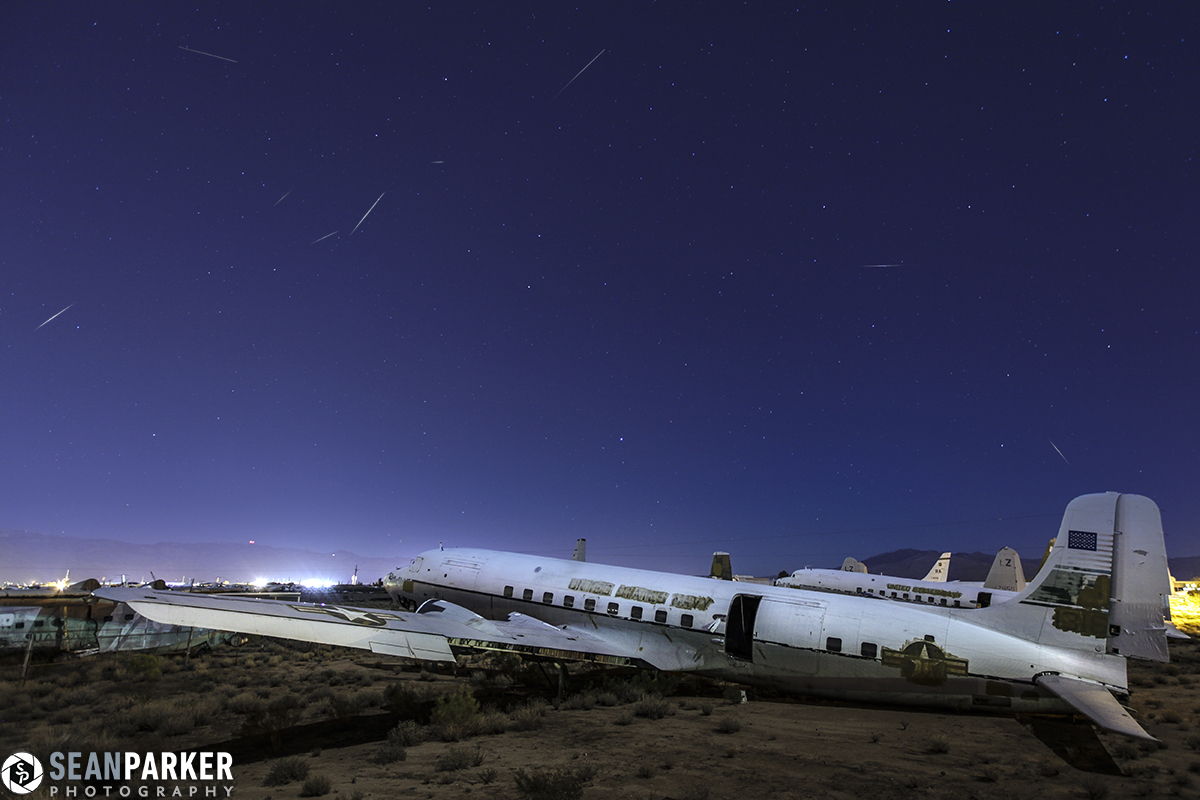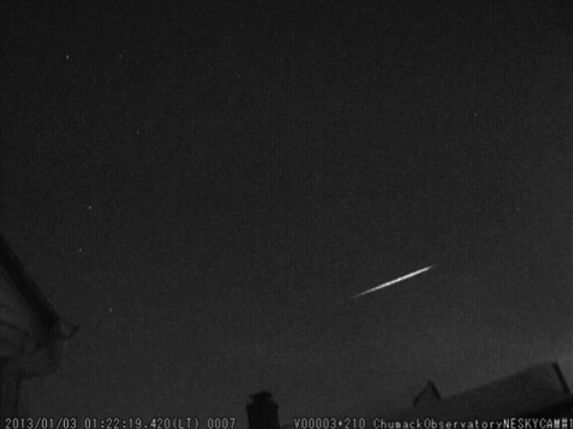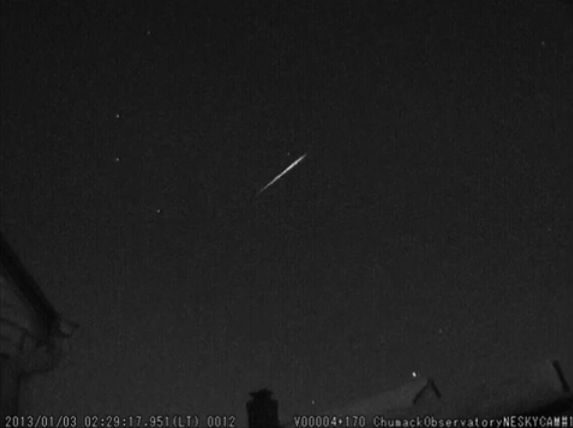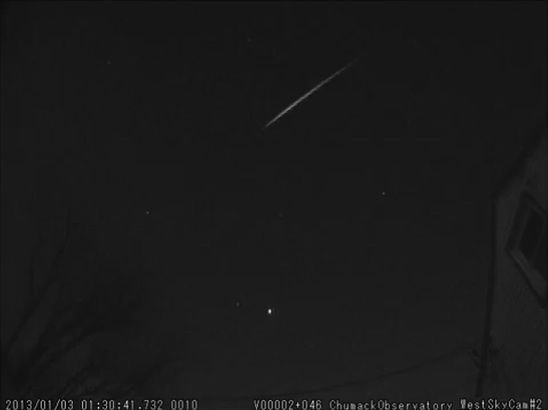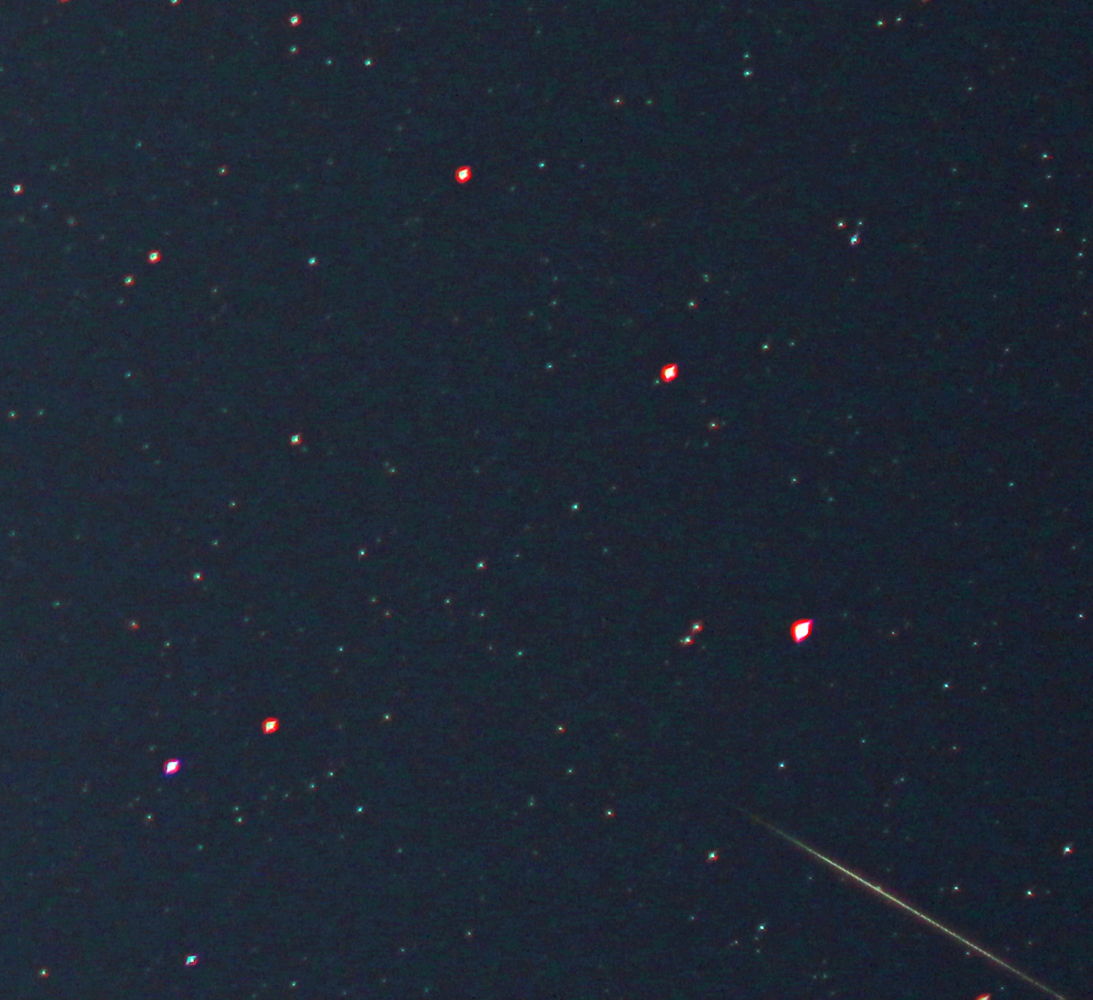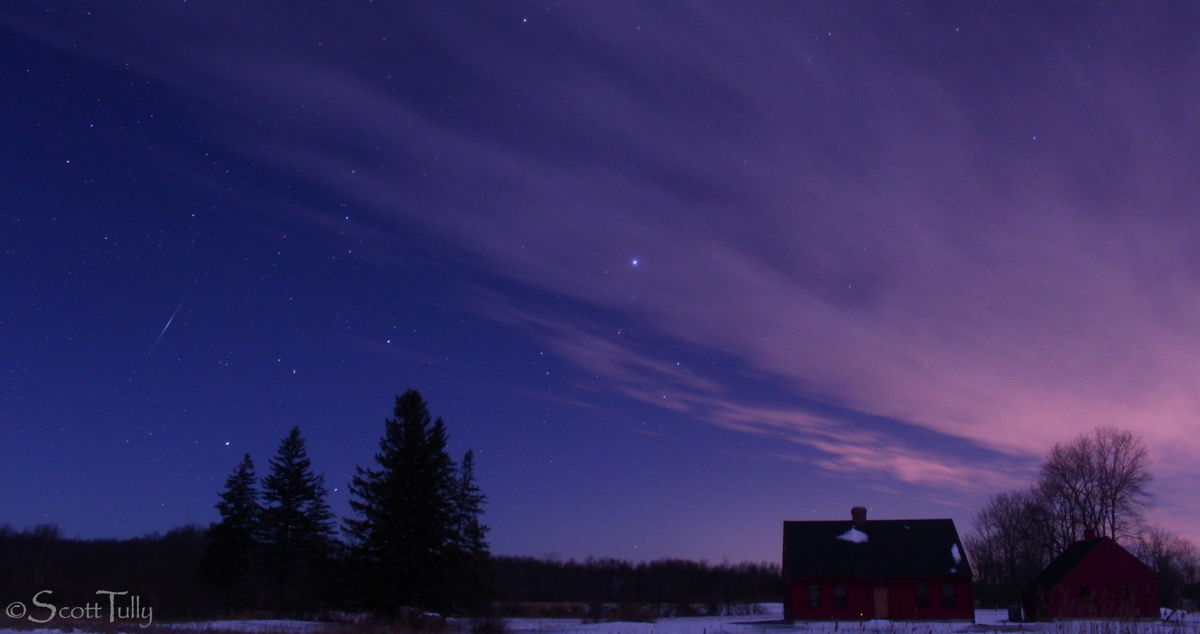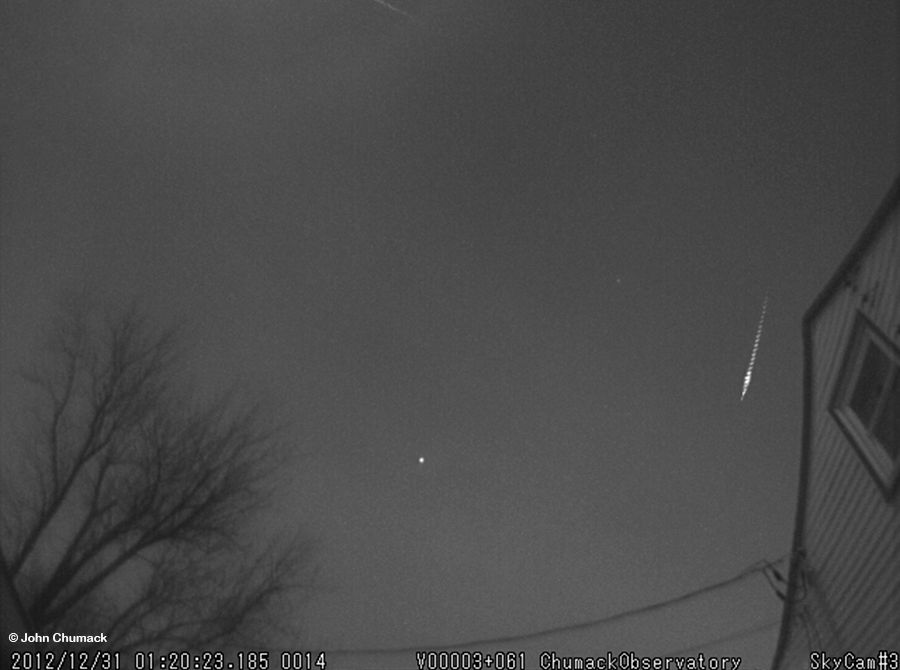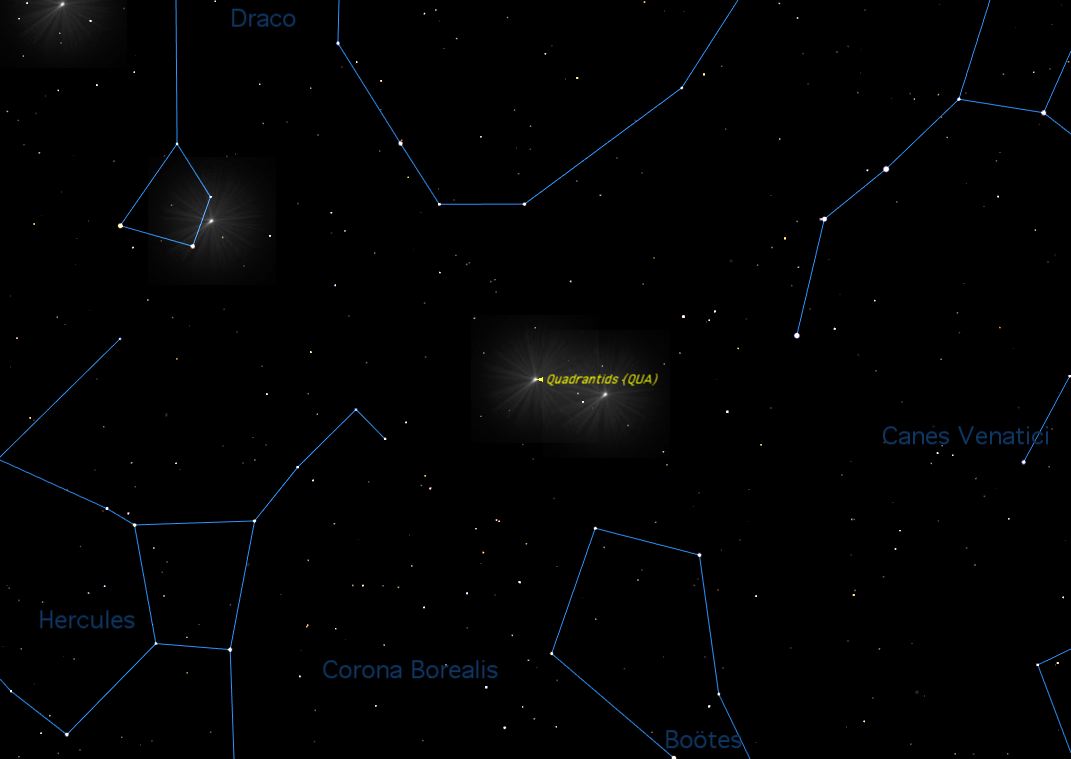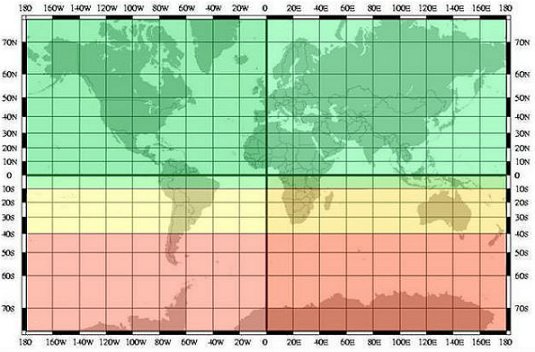Quadrantid Meteor Shower Photos of 2013
2013 Quadrantid Meteors Over Tucson
Astrophotographer Sean Parker produced this image of Quandrantid meteors over Tucson, AZ, on Jan. 3, 2013. He writes: "The boneyard [aircraft graveyard] is run by the [Davis-Monthan] Air Force base which requires clearance, and is surrounded by 10-foot barbed wire fences. But fortunately I have a Jeep and a tall tripod – so I drove around numerous spots looking for a place I could pull … close to the fence and take pictures from on top. And I found one."
Quadrantid Meteor Over Ohio (Video Image)
Astrophotographer John Chumack caught a Quandrantid meteor in this still image from a video taken in Dayton, OH, on Jan 3, 2013.
Quadrantid Meteor Over Ohio (Video Image) #2
Astrophotographer John Chumack caught a Quandrantid meteor in this still image from a video taken in Dayton, OH, on Jan 3, 2013.
Quadrantid Meteor Over Ohio (Video Image) #3
Astrophotographer John Chumack caught a Quandrantid meteor in this still image from a video taken in Dayton, OH, on Jan 3, 2013.
Quadrantid Meteor Over Ohio (Video Image) #4
Astrophotographer John Chumack caught a Quandrantid meteor in this still image from a video taken in Dayton, OH, on Jan 3, 2013.
2013 Quadrantid Meteor Over Missouri
Astrophotographer Victor Rogus sends in a photo of a Quadrantid meteor taken over Jadwin, MO, on Jan. 3, 2013.
2013 Quadrantid Meteor Over Connecticut
Astrophotographer Scott Tully sends us a shot of a Quadrantid meteor taken over the northwest hills of Connecticut on January 3, 2012.
Breaking space news, the latest updates on rocket launches, skywatching events and more!
Quadrantid Meteor Over Ohio
Astrophotographer John Chumack sent in his photo of a Quadrantid meteor taken over his house in Dayton, OH, on Dec. 31, 2012.
Quadrantid 2013 Sky Map
The Quadrantid meteor shower should give skywatchers looking up at the Eastern sky (shown here) a good show when it peaks in the early hours of Thursday morning (Jan. 3) this week.
Quadrantid Meteor Shower 2013: Visibility Map
This NASA map depicts the locations on Earth where the 2013 Quadrantid meteor shower will be visible in early January 2013. Green areas denote good viewing areas, yellow marks poor visibility and red denotes regions where the shower will likely not be visible.
Join our Space Forums to keep talking space on the latest missions, night sky and more! And if you have a news tip, correction or comment, let us know at: community@space.com.

Space.com is the premier source of space exploration, innovation and astronomy news, chronicling (and celebrating) humanity's ongoing expansion across the final frontier. Originally founded in 1999, Space.com is, and always has been, the passion of writers and editors who are space fans and also trained journalists. Our current news team consists of Editor-in-Chief Tariq Malik; Editor Hanneke Weitering, Senior Space Writer Mike Wall; Senior Writer Meghan Bartels; Senior Writer Chelsea Gohd, Senior Writer Tereza Pultarova and Staff Writer Alexander Cox, focusing on e-commerce. Senior Producer Steve Spaleta oversees our space videos, with Diana Whitcroft as our Social Media Editor.
